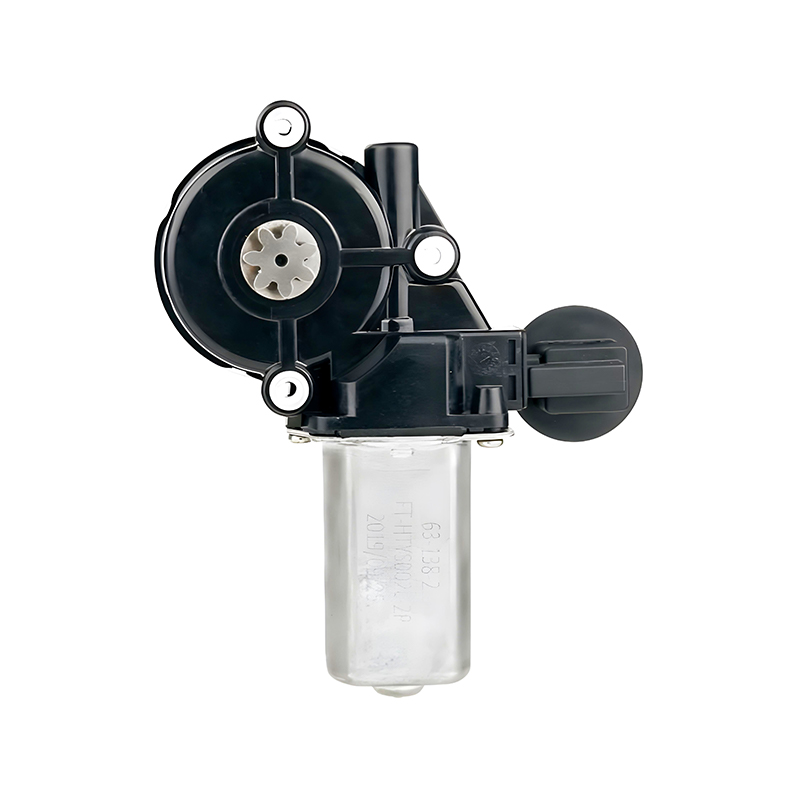A modular motor design approach has become a valuable solution, simplifying product platform integration across different models and applications. This design philosophy allows manufacturers to create versatile actuator electric motors that fit seamlessly into systems such as the electric window regulator, streamlining production and reducing complexity.

The electric window regulator is a common feature in modern vehicles, relying heavily on reliable actuator electric motors for smooth and precise operation. Traditionally, the motors integrated into these systems were often designed specifically for one application, making them less adaptable to different vehicle platforms. With modular motor design, the components are standardized into distinct modules that can be combined or adjusted to fit multiple configurations. This flexibility means that a single actuator electric motor model can be adapted easily for use in a variety of electric window regulator designs.
One of the key benefits of modular motor design is its impact on the integration process within automotive assembly lines. When the actuator electric motor and the electric window regulator are developed with modularity in mind, the process of fitting these components into different car models becomes more straightforward. Manufacturers can reduce the number of unique parts required, reduce inventory, and simplify supply chain management. For example, a motor designed with interchangeable mounting brackets or adjustable shaft lengths can be quickly configured for several types of electric window regulator mechanisms, improving efficiency.
Moreover, modularity helps address the challenges associated with customization and upgrading vehicle features. As consumer preferences evolve, manufacturers need to implement new functions or improve existing ones without redesigning the entire actuator electric motor. A modular design allows for individual components—such as the stator, rotor, or gear set—to be upgraded or replaced independently. This approach is especially valuable for the electric window regulator system, where adjustments in torque or speed might be necessary to suit different vehicle classes or window sizes. By using modular actuator electric motors, these changes can be made without significant engineering overhauls.
Another advantage is the ease of maintenance and repair that comes with modular designs. If a specific part of the actuator electric motor in an electric window regulator fails, service technicians can replace only the faulty module rather than the entire motor assembly. This not only reduces repair time but also lowers maintenance costs over the vehicle's lifespan. Modularity thus supports sustainability efforts by promoting component reuse and reducing waste, aligning well with the automotive industry's growing focus on environmental responsibility.
In addition to integration and maintenance, modular motor design supports scalability in production. Whether a manufacturer needs to supply a small batch of vehicles or ramp up to mass production, using standardized actuator electric motors across different platforms simplifies manufacturing adjustments. The electric window regulator, being a key comfort and convenience feature, benefits from this scalability because the motors can be quickly adapted or scaled according to demand without sacrificing quality or performance.
Throughout the design and development phases, engineers leverage modularity to accelerate time-to-market for new vehicle models. The actuator electric motor can be tested and validated as a standardized module, reducing the need for repeated testing when it is integrated into different electric window regulator systems. This approach shortens development cycles and allows for faster responses to changing market requirements. Additionally, consistent modular designs help ensure reliable performance and compatibility, which are critical for customer satisfaction.
The flexibility of modular actuator electric motors also supports innovation in automotive technology. As vehicles become increasingly complex with advanced driver assistance systems and smart features, the ability to modify motor performance characteristics quickly is essential. For electric window regulators, motors may need to incorporate sensors or communication capabilities to work with intelligent control systems. Modular designs allow these electronic modules to be integrated or updated independently, facilitating the introduction of new technologies without redesigning the entire motor.
Finally, adopting a modular approach reduces engineering costs by enabling reuse of existing components. Designing a new actuator electric motor for every electric window regulator variation would require substantial resources. Instead, manufacturers can focus on refining and improving a core modular platform, applying it to numerous applications. This not only cuts costs but also supports consistent quality control, as the same proven modules are used repeatedly across different product lines.
In conclusion, modular motor design plays a significant role in simplifying product platform integration within the automotive sector. It enhances the adaptability, maintainability, and scalability of actuator electric motors, especially when used in systems like the electric window regulator. By focusing on modular components, manufacturers can respond more effectively to evolving demands while managing costs and improving production efficiency. This design philosophy is becoming increasingly important as vehicles continue to incorporate more complex and varied electronic motor-driven systems.
Your email address will not be published. Required field are marked*